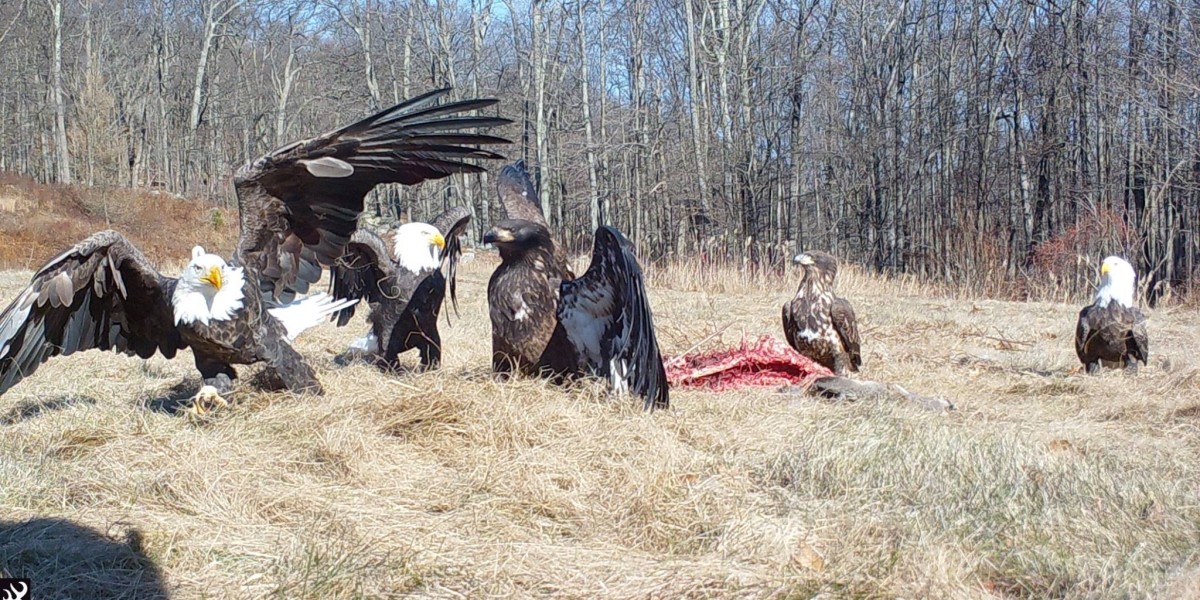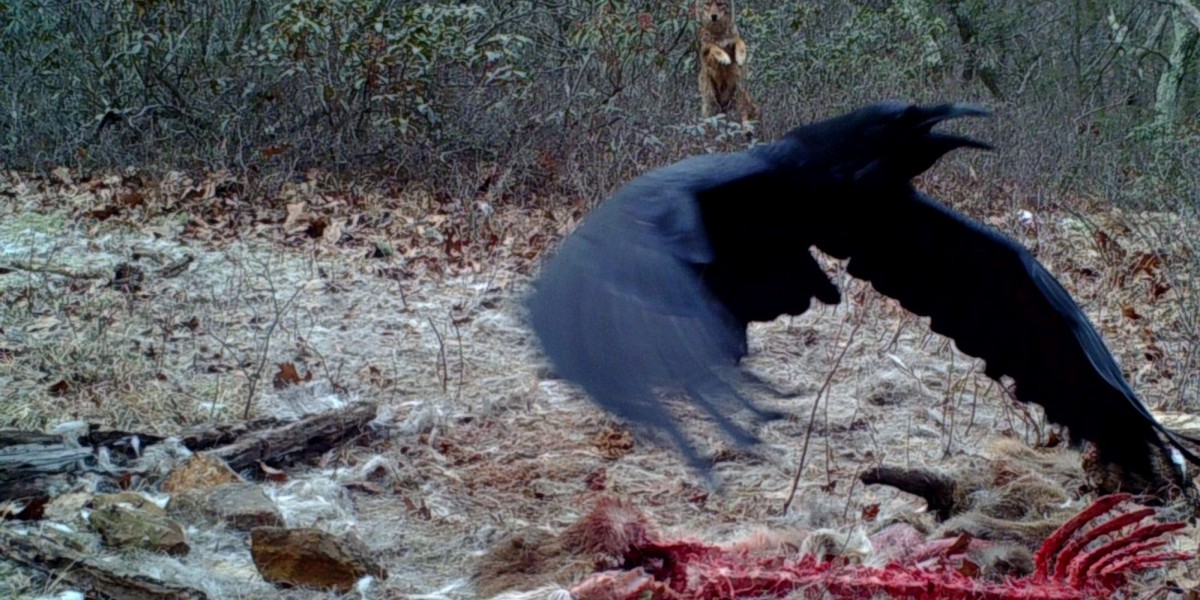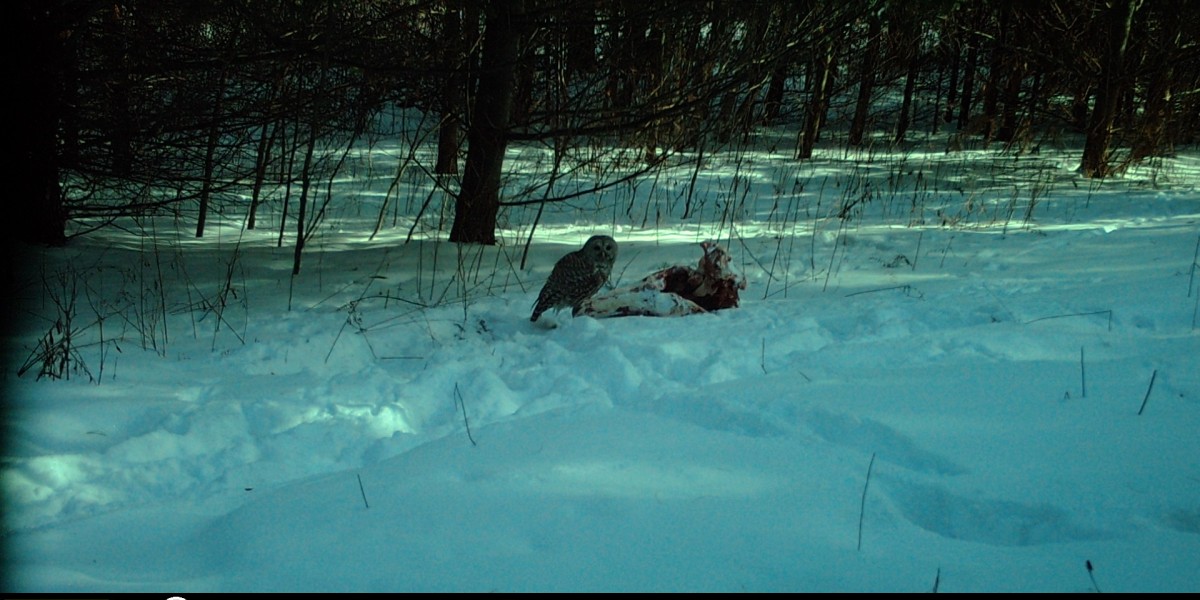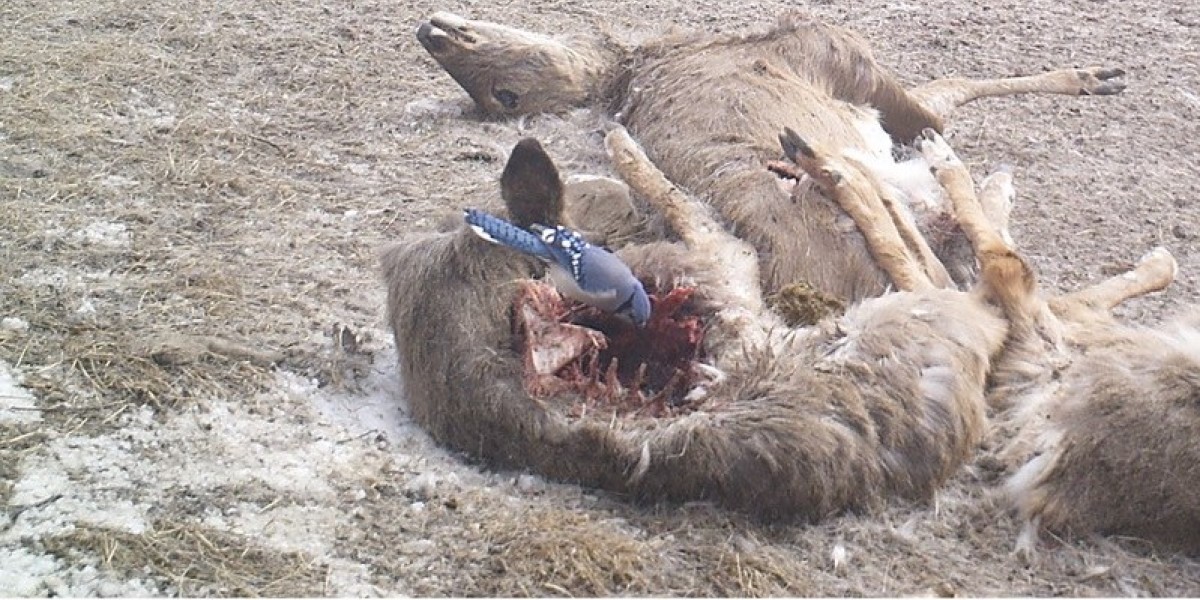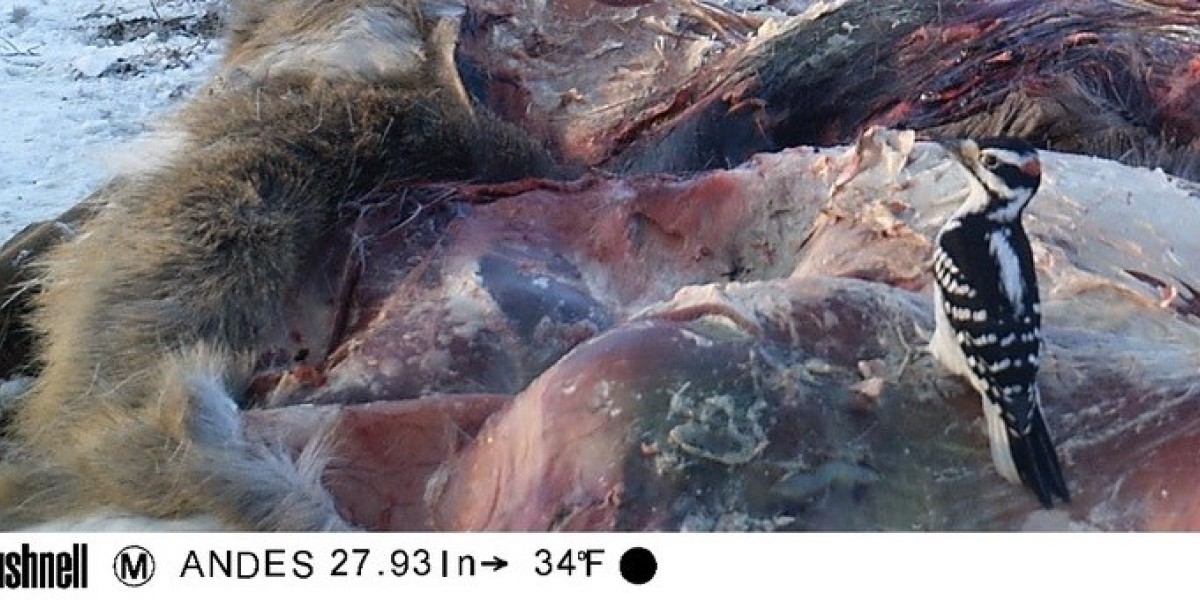What's in that gut pile?
A common practice for most big game hunters includes field-dressing harvested animals in the field. Yep, that means removing the internal organs - appropriately called the gut pile - and leaving it behind. This gut pile is then scavenged by an assortment of wildlife species including numerous bird species (like eagles, crows, ravens, and hawks), mesocarnivores, and more.
Although it might seem like leaving the gut pile behind would benefit scavenging wildlife, it really isn’t a good idea depending on the hunting implement you used to take the deer. Many states recommend different methods to dispose of the gut pile because what may be lurking inside the gut pile is a real risk...lead ammunition like shot or particles from lead bullets. Lead bullets are designed to fragment upon impact and can spread throughout the target animal's body. A visiting scavenger consumes the lead bullet fragments left behind in the gut pile. Depending on the toxic dose, there can be neurologic impacts, leading to injury and death. The best way to avoid poisoning non-target wildlife is by using non-lead ammunition like solid copper bullets. Eagles and vultures are particularly susceptible to lead toxicity because of their highly acidic stomachs. Lead fragments are broken down by the acid allowing lead to enter the bloodstream leading to toxic effects.
State wildlife agencies encourage the use of non-lead ammunition. Please visit NYSDEC's Choose Non-Lead Ammunition for more info on ammunition choice. The Maine Dept. of Inland Fisheries and Wildlife has a comprehensive list of places to purchase non-lead ammo, Hunting with Nonlead Ammunition, along with recommendations for gut pile disposal (below). If you are unable to find non-lead ammo, your actions can still limit exposure to scavengers.
1. Low Effort - Leave your gut pile and carcass under conifers to hide from avian scavengers. Conifers are evergreen trees, providing ground cover year-round and may be able to visually hide the disposed gut pile from aerial views.
2. Moderate Effort - If you’re on your own property or have permission from the landowner, you can dig a shallow hole and bury your gut pile and carcass parts to prevent access from predators. Do not just bury it in the snow because it will eventually melt, exposing the gut pile again.
3. Most Effort – You may choose to carry the remains of your gut pile out with you, leaving nothing behind for scavengers to find. If you choose this option, you can use a trash bag and dispose of the carcass parts in a municipal landfill.
Hunters are great stewards of the land and wildlife they interact with every season. Their goal is to preserve the legacy of the environment they hunt in. But even the best hunter can wound and be unable to locate the animal; this animal will eventually succumb to its injuries, and the carcass will become a resource for a variety of species. Ammunition choice makes a difference.
The usual suspects
Bird species, most notably birds of prey like hawks, eagles, and owls, are frequent visitors to carcasses. Most people only think of vultures when thinking of scavenging birds, but birds from many different families will scavenge if the opportunity arises - crows and ravens, woodpeckers, and even songbirds have been observed on carcasses. Hawks and eagles are heavy scavengers and can ingest lead directly from remains. The neurologic effect on avian scavengers can increase their risk of traumatic death; it impacts their ability to fly and search for food, leading to death from starvation. Lead poisoning makes birds more likely to scavenge near roads and be hit by passing vehicles or to fly into power lines and get electrocuted.
Mesocarnivores like fishers, foxes, skunks, otters, coyotes, martens, raccoons, and bobcats are often visitors to carcasses and consume based on availability - a deer gut pile scavenging opportunity means a big meal that is hard to pass up. What's a mesocarnivore? They are species that need to consume 50-70% of their diet as meat. They play an important ecological role in the food web and in the ecosystem through seed dispersal in their feces.
Who else might visit a carcass or gut pile? Omnivores like black bears, small mammals like squirrels, reptiles like snapping turtles, and domestic animals like dogs. Even other deer may scavenge a dead deer.
What you leave behind
Thinking about what we leave behind is on a lot of people's minds these days, from plastic bags and bottles to other non-biodegradable waste. We need to change how we discard things to limit the impact on other species. Thinking about how what we leave behind affects wildlife species, we can play an important role in a population's overall health.
Basically, if there is opportunity to score a free meal, an animal will eat it. Some animals rely on scavenging for their survival. Knowing that there is no safe level of lead in any species, a hunter’s ammunition choice can mean life or death for a non-target animal. Ammunition choice makes a difference.
References on Lead Ammunition Impact and Scavengers
Assi, M. A., Hezmee, M. N., Haron, A. W., Sabri, M. Y., & Rajion, M. A. (2016). The detrimental effects of lead on human and animal health. Veterinary World, 9(6), 660–671. https://doi.org/10.14202/vetworld.2016.660-671
Berny, P., Vilagines, L., Cugnasse, J. M., Mastain, O., Chollet, J. Y., Joncour, G., & Razin, M. (2015). VIGILANCE POISON: illegal poisoning and lead intoxication are the main factors affecting avian scavenger survival in the Pyrenees (France). Ecotoxicology and Environmental Safety, 118, 71-82.
Hampton Jordan O., Laidlaw Mark, Buenz Eric, Arnemo Jon M. (2018) Heads in the sand: public health and ecological risks of lead-based bullets for wildlife shooting in Australia. Wildlife Research 45, 287-306. https://doi.org/10.1071/WR17180
Hunt, W. G. (2012). Implications of sublethal lead exposure in avian scavengers. Journal of Raptor Research, 46(4), 389-393.
Knopper, L.D., Mineau, P., Scheuhammer, A.M., Bond, D.E. And Mckinnon, D.T.(2006), Carcasses of Shot Richardson's Ground Squirrels May Pose Lead Hazards to Scavenging Hawks. The Journal of Wildlife Management, 70: 295-299. https://doi.org/10.2193/0022-541X(2006)70[295:COSRGS]2.0.CO;2
Legagneux, P., Suffice, P., Messier, J. S., Lelievre, F., Tremblay, J. A., Maisonneuve, C., ... & Bêty, J. (2014). High risk of lead contamination for scavengers in an area with high moose hunting success. PLoS One, 9(11), e111546.
Newth, J. L., Lawrence, A., Cromie, R. L., Swift, J. A., Rees, E. C., Wood, K. A., ... & McDonald, R. A. (2019). Perspectives of ammunition users on the use of lead ammunition and its potential impacts on wildlife and humans. People and Nature, 1(3), 347-361.
Pain, D. J., Dickie, I., Green, R. E., Kanstrup, N., & Cromie, R. (2019). Wildlife, human and environmental costs of using lead ammunition: An economic review and analysis. Ambio, 48(9), 969-988.
Pauli, J. N., & Buskirk, S. W. (2007). Recreational shooting of prairie dogs: A portal for lead entering wildlife food chains. The Journal of Wildlife Management, 71(1), 103-108.
Richard M. Kostecke, George M. Linz, William J. Bleier. (2001).Survival of avian carcasses and photographic evidence of predators and scavengers. Journal of Field Ornithology, 72(3), 439-447, (1 July 2001)
Schulz, J. H., Stanis, S. A. W., Morgan, M., Li, C. J., Hall, D. M., & Webb, E. B. (2021). Perspectives from natural resource professionals: Attitudes on lead ammunition risks and use of non-lead ammunition. Journal of Outdoor Recreation and Tourism, 33, 100341.
Tranel, M. A., & Kimmel, R. O. (2009). Impacts of lead ammunition on wildlife, the environment, and human health—a literature review and implications for Minnesota. Ingestion of lead from spent ammunition: implications for wildlife and humans. The Peregrine Fund, Boise, Idaho, USA.
Vorvolakos T, Arseniou S, Samakouri M. (2016). There is no safe threshold for lead exposure: Α literature review. Psychiatriki. 2016 Jul-Sep;27(3):204-214. doi: 10.22365/jpsych.2016.273.204. PMID: 27837574.



